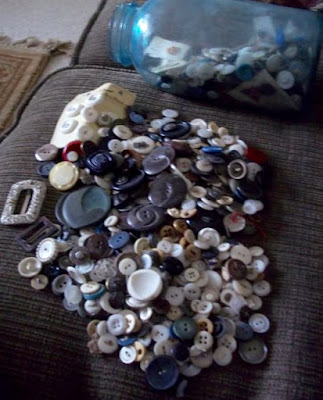The internet has plenty of genealogy references. Some will be free and some will cost. See what you can find from the free ones first. Keep in mind, however, that not all the info might be accurate. And you will find contradictions about your ancestors. Always look for a source of information—for instance, a death certificate or a census record. This 1860 census, for instance, shows that my great-grandfather, Greenbury L. Forbes (age 23), was still living in the household of his father, Peter B. Forbes.
This death certificate for my great-grandfather, George William Ruble, has lots of information—including his parents' names.
*Library: Take advantage of the classes on genealogy that you local library night offer. When the Franklin County Library (Rocky Mount, Virginia) had a six-week free course a few years go, I signed up. I learned a lot about different resourses not only in the library, but also at the local courthouse.
*Facebook Groups: I joined several county genealogy groups on Facebook: Caldwell Family of Boteourt and Craig Counties, Franklin County Virginia Genealogy, Botetourt County Virginia Genealogy, Bedford County Genealogy, and Craig County Historical Society. A member of the Botetourt County Genealogy Group was able to find my great-aunt's obituary from 1911:
*Find-A Grave. Not only can you find where an ancestor is buried, you might find additional information, such as names of parents or siblings. Since anyone with an account can post, accuracy of the info might vary. But that info can be a good starting point for further research. When searching for the grave of my possible 6th-great grandfather, John Adam Roush/Johannes Rausch, I found these:
https://www.findagrave.com/cgi-bin/fg.cgi?page=gr&GRid=14655408 https://www.findagrave.com/cgi-bin/fg.cgi?page=gr&GRid=136929606
https://www.findagrave.com/cgi-bin/fg.cgi?page=pv&GRid=14655408&PIpi=29719419
 |
| Photo posted on several web sites—I'm unsure of credit. |
The Find-A-grave site tells where he is buried (Ruble Cemetery on Rt. 311, Craig County, VA), so that's some additional information—that leads to a list of everyone buried there.
*The USGenWeb Project has various info from different states. I particularly liked the Virginia County Formation Dates page because it let me know what counties the current counties were formed from.
There are lots of lists of "free genealogy sites" on the Internet, but some are more helpful than others. A bit of Googling will locate them for you.
*Ancestry.com isn't free to join, but they offer a free trial and occasionally they offer specials. For instance, they offer an AARP discount for first-time users who are AARP members, but you need to call Ancestry to get this deal. I've also found you can get a better deal when calling them to renew rather than renewing online. Their support number is 1-800-615-6560. Again, many family trees might have mistakes, so check sources.
Besides my Naces of Lithia blog about my Botetourt County ancestors, I've posted other genealogical stuff info on my Peevish Pen blog, For most of these, I relied upon various internet sources:
"Martin Mystery" http://peevishpen.blogspot.com/2014/11/martin-mystery.html
"Martin Mystery II" http://peevishpen.blogspot.com/2015/01/martin-mystery-ii.html
"Genealogical Mysteries in Maryland": http://peevishpen.blogspot.com/2015/03/genealogy-mysteries-in-maryland.html
"Celia and Lewis Hancock" http://peevishpen.blogspot.com/2014/10/celia-and-lewis-hancock.html
"Untangling Caldell Roots" http://peevishpen.blogspot.com/2015/07/untangling-caldwell-roots.html
"Tangled Ruble Roots" http://peevishpen.blogspot.com/2014/02/tangled-ruble-roots.html
Speaking of blogs, there are a lot of them about genealogy. Here are two:
"10 Genealogy Blogs Worth Reading" https://www.thoughtco.com/genealogy-blogs-worth-reading-1421713
"Almost 3,000 Genealogy and Famimly History-related Blogs" http://www.geneabloggers.com/genealogy-blogs/
If you're interested in looking up your own genealogy, there are lots of places to start.
~














